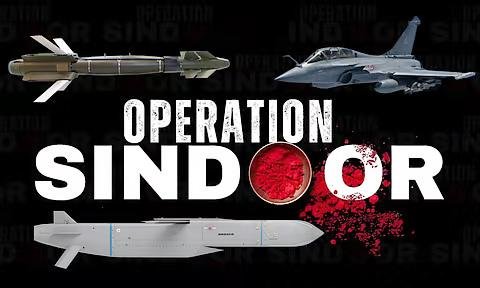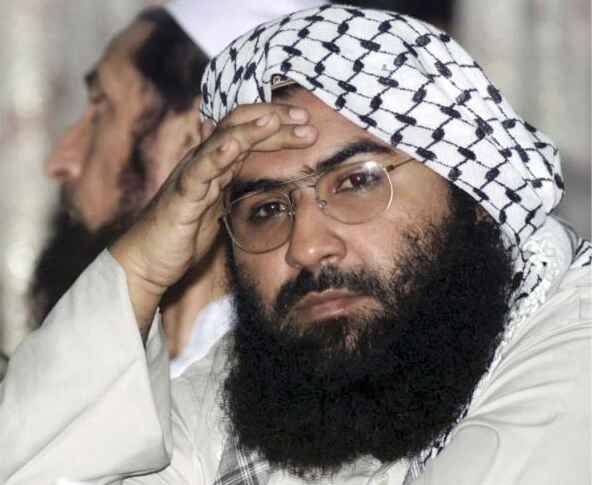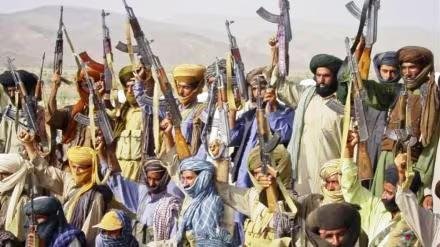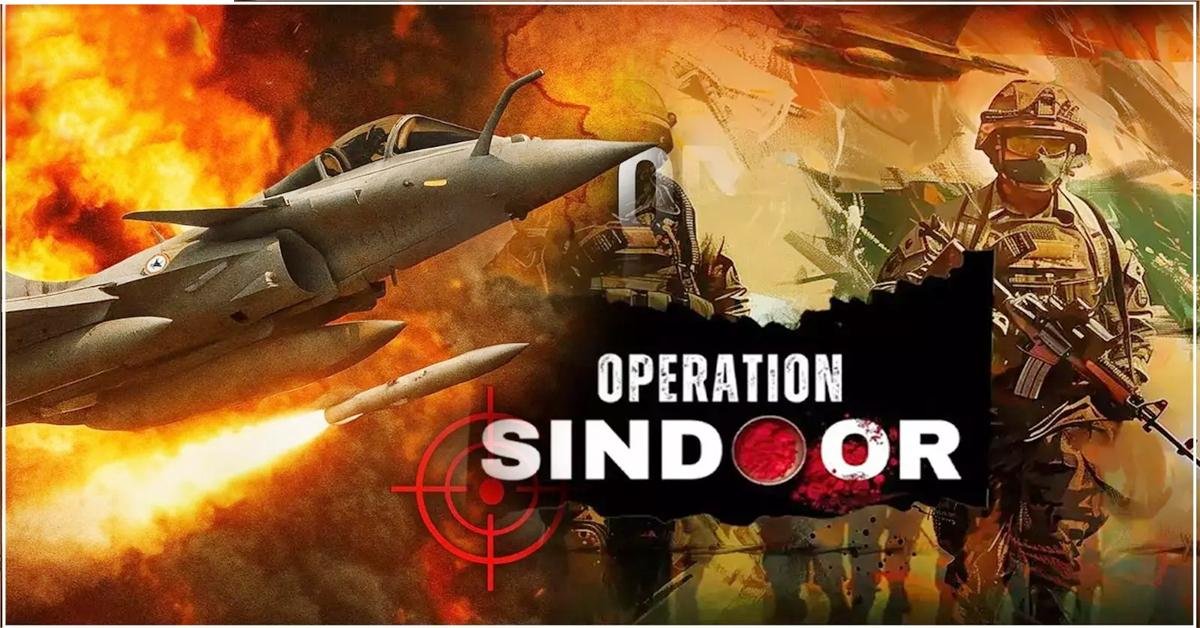India carried out Operation Sindoor and conducted air strikes on 9 terrorist hideouts of Pakistan and Pakistan. After this, Pakistan has stated that it will also reply to it at its own chosen time and method. Pakistan’s deputy PM Ishqdar also tried to scare India with his nuclear weapons. Why does Pakistan start threatening a nuclear attack directly after seeing India’s power? Let us know the whole story of the nuclear power of both countries. It has been threatening a nuclear attack every time. Why does it do so? Pakistan is weaker than India in a conventional war. Pakistan feels that it cannot survive with India in a conventional war like mother, naval power and economically. India is the fourth most powerful military in the world. In such a situation, Pakistan always tries to scare people with nuclear threats. The situation to show the world is very dangerous. Pakistan wants to draw the attention of the whole world by revealing the secret of a nuclear attack so that countries like America and China stop India from taking action. Pakistani public. To divert the attention of the people of Pakistan, who are already struggling with terrorism and terrorism, from important issues, the government of Pakistan and the people of Pakistan try to create a nationalistic atmosphere through nuclear threats. However, there is a lot of difference between the nuclear policies of India and Pakistan. Under the Nuclear Doctrine issued in 2003, India has a policy of ‘first attack’ for nuclear attack, that is, India will not attack first, although if any country attacks with nuclear weapons, it can retaliate. On the other hand, Pakistan does not have any nuclear doctrine at all; that is, if the opportunity arises, it can attack first with nuclear weapons. In India, the National Security Advisor Ajit Doval has this policy, who is the chairman of the Political Council and Executive Council of the National Command Authority.

In Pakistan, the National Command Authority has been making decisions on nuclear weapons, whose chairman is the Prime Minister. In the year 2002, Pakistan’s Lieutenant General Khalid Ahmed Kidwai had said that the target of Pakistan’s nuclear weapons is only India. At that time, he was the head of the Strategic Plans Division. While talking to the Italian Arms Control Institute Land Rover Network, he had said that the target of Pakistan’s nuclear weapons is only India. It was said that if India conquered a large part of Pakistan, damaged a large part of the air service, weakened it economically or a situation like a civil war arose, then a nuclear attack would be carried out. In 2025, a report by the Federation of American Scientists was released. It was said that India has 180 nuclear weapons while Pakistan has 170. Pakistan has technical nuclear weapons that can target within a range of 60 to 70 kilometers, which is a big challenge for India. However, India is a country that can launch nuclear missiles from land, air, and all three places. India has not made any changes in its nuclear policy since 2003. However, in 2019 at Pokhran, Defense Minister Rajnath Singh had said that what happens in the future will depend on the circumstances. Experts believe that India should change its nuclear policy.
India is three times more powerful than Pakistan: If there is a war after Operation Sindoor, Pakistan will survive for only 7 days
Attacked the gimmick hideouts of Pakistan and Pakistan-occupied Kashmir. These hideouts are in Bahawalpur Potli and Muzaffarabad. These are the same hideouts from where the conspiracy to attack India was being hatched. In response to this, Pakistan has said that now we will decide the place and day of the attack. Will Pakistan fight in response to Operation Sindoor? If yes, then Pakistan will know. First, let us know how weak Pakistan is in front of India’s military power. According to the report of Global Fire Power Index, India is the fourth most powerful country in the world, whereas in this list of 145 countries, Pakistan is at number 12, which means India is 3 times more powerful than Pakistan. Talking about the defense budget, today, while the total budget of the Indian army is 6.3 crores, Pakistan’s budget is only 65000 crores rupees. Apart from this, the Indian army has 14 lakh 55000 soldiers. If we call 11.5 reserve and 25.27 soldiers of the paramilitary force, then it will be the number will become 51. While Pakistan has a total of 17.0, we now know how big the stockpile of weapons that India has. India has a stockpile of weapons almost 3 times more than Pakistan. For ground war, there are powerful tanks like T20 Bhishma and Arjun, and fighter jets like 1.6 from Pakistan. Pakistan is also more powerful than F16. American M9B Reaper and drones like Israeli Haran Haro and Harman with a range of 450 km to 1000 k,m can make Pakistan sweat. India has two aircraft carriers, like INS Vikramaditya and INS Vikrant, while Pakistan does not have a single aircraft carrier. While both countries are equal in terms of nuclear power, India is far ahead in terms of launching them. According to the report of the Federation of American Scientists, India has about 180 nuclear weapons, which it can easily launch through land, air, and sea. On the other hand, Pakistan has about 170 nuclear weapons, but it does not have the power to launch them
through the sea. In such a situation, the question arises: If there is a full-fledged war between India and Pakistan, how much money can both countries spend? According to media reports, in the 1999 Kargil war, India spent about 1400 crore rupees every day while Pakistan spent only 370 crore rupees. Now, if there is a war again after 26 years, India can spend about 1500 to 2000 crore rupees every day, while Pakistan will be able to spend only 400 to 600 crore rupees. However, the price can also change depending on the situation. Retired Colonel Danveer Singh says that Pakistan does not have fuel to run its tanks. In February 2021, Pak Army Chief General Qamar Bajwa himself admitted this. In such a situation, a war with India will prove to be an expensive deal for Pakistan. According to some reports, if a full-fledged war starts, India will be able to run out of ammunition for about 40 days, while Pakistan has ammunition to fight for only 7 days. However, both countries can increase their military strength and ammunition capacity.
Operation Sindoor- SCALP missile showed its power along with Rafale: even bunkers were not spared; SCALP can even defeat the terror hideouts hidden underground
15 days after the Pahalgam attack, India carried out air strikes on 9 terror hideouts of Pakistan and Pakistan. This was done under Operation Sindoor in Bahawalpur, Murid Ke Bagh, Potli, Muzaffarabad, Chak Amrood, Bhimbir, Sialkot, and Gulpur. India used the SCALP missile for this strike. Its code name is Strong Shadow. Let us know what is the specialty of this missile. SCALP is a long-range and launch cruise missile. It has been developed by France and Britain. India has purchased it along with the Rafale fighter aircraft. The missile, weighing about 1300 kg, can strike from the air to the ground, and its speed is slightly less than the speed of the wind. Now let us know what are the four major features of this missile. The first feature is a stealth entry style. Due to its aerodynamic and chapter shape, the Iskradar cross section is very small, due to which the enemy radars could not identify it. The design of its outer layer is such that it absorbs the radar waves. Due to its very low infrared signature, the enemy cannot find it, and the enemy does not come to know about it until the missile reaches very close to the target. The second feature is long-range attack. Scalp can reach enemy targets at a distance of about 560 km, the Rafale aircraft does not need to go into the enemy’s air defense zone. The risk of damage to both the pilot and the aircraft is reduced. The third feature is accurate aim. Despite the long range, this missile can hit the target

Its navigation system has four parts: first, INC, which determines the route in the initial flight. Second, GPS updates the target location. The third track profile matching it adjusts the height and direction by matching with the target, and the fourth is O, which matches the picture of the target in the last second, and hits the target accurately at the centimeter level. This missile can also target small targets accurately while moving. The fourth feature is the ability to attack in depth. Its warhead destroys the target at two levels. In the first step, it attacks the structure outside the target. This creates a hole in the concrete or steel wall. In the second step, it attacks the equipment or system present inside. It destroys all the nuclear weapons and is therefore very effective against hidden targets.
Is the entire family of terrorist Masood Azhar wiped out, including his wife and sister? How India took revenge after 25 years in Operation Sindoor
Terrorist Masood Azhar, who destroyed about 125 innocent families in India in the last 25 years, has started talking about dying after a single strike by India. Operation Sindoor also exposed his hideout outside the country. According to reports, 14 people, including Masood’s wife, sister, children, and four close ones, were killed in this. To this, Masood said repeatedly, I wish I too had been a part of this lucky convoy of 14. After all, who is Masood Azhar, and why was he the target of Operation Sindoor? You will know in today’s explainer that India had targeted a total of nine terrorist hideouts under Operation Sindoor, out of which eight hideouts were chosen at a distance of 9 to 30 kilometers from the border. Only terrorist Masood Azhar’s hideout was in Bahawalpur, 100 kilometers from the international border

It is said that Masood Azhar and his family members live in this big campus named Markaz Subhan Allah. This is also the headquarters of Jaish, from where the Pulwama attack in 2019 was planned.
After Operation Sindoor, Masood stated that at 7 am, he said that 14 members of his family were killed in the Indian attack. However, we cannot independently confirm this claim. In such a situation, the question arises that how did Masood Azhar survive? Masood was living on this campus for years. After the Pulwama attack in February 2019, Mohammad took responsibility for it. After this, under pressure from India, the United Nations put Masood on the list of global terrorists. Pakistan took over the Bahawalpur headquarters of Jaish for show. According to reports, after the Pahalgam attack, Pakistan was expecting such a strike from India, so it is believed that Masood was already shifted from there. Retired Lieutenant General Rameshwar Rai says that Masood has the protection of the service in Pakistan. Masood is present on the land of Mata, not Pakistan, so if Pakistan can try to hide Masood Azhar after his death, can he be kept in hiding in India? The target was Pakistan’s groups, Like Mohammad, Lashkar-e-Taiba, and Hizbul Mujahideen, all of which carry out terrorist attacks on India, so the hideouts of these three were targeted, so it cannot be said that Masood was the main target of the operation. Now let us know who India’s biggest enemy Masood Azhar. Born in 1968, Masood Azhar was involved in many terrorist activities. He was arrested by India in 1994, but on 24 December 1999, flight IC 814 from Kathmandu to New Delhi was hijacked. In return, there was a demand to release three terrorists, including Masood Azhar, from jail, and the Indian government had to release Masood. After being released, Masood laid the foundation of Like Mohammad in Karachi on 31 January 2000 and carried out many big attacks including a suicide attack on the headquarters of The Sewa in April 2000, the Jammu and Kashmir Assembly attack on October 1, 2001, and the India Parliament attack on December 13, 2001 The attack on in 2016 the Pathankot airbase and the entire service headquarters and the attack on the CRPF convoy in Pulwama in 2019, about 125 people have lost their lives in Masood’s major attacks. Now, when his close aides were killed in Operation Sindoor, Masood’s statements reflect his bitterness.
Now, if Pakistan breaks up, only the land equivalent of Rajasthan will remain. What is BLA, and why is it ready to kill and die for Balochistan
Four days ago, on 6th March, a remotely controlled IED blast took place on a Pakistani convoy in Balochistan, and 12 soldiers lost their lives. The Baloch Liberation Army took responsibility for this. The same night, India carried out air strikes on 9 terrorist camps of Pakistan and Pakistan. The Pakistani military got entangled in this front, and on the other hand, the Blue Army hoisted its flag on some parts of Pakistan. What is the Baloch Liberation Army?
Why do the Baloch want freedom from Pakistan, and will Pakistan break up again like in 1971? We will find out.
According to Balochistan-based Radio Jhumresh, after the IED blast on the Pakistani convoy on 6th March, the Blue Army attacked the Pakistani Army with the Kag Mustang and Kanchi missiles in different locations. On 9th March, the Baloch rebels targeted the Pakistani Army in a single day. In March, the Zafar Express Highway was attacked, in which the Pakistani Army suffered heavy humiliation. Baloch writer Amir Yar wrote in an article that the Baloch people The Baloch have started hoisting their flag and taking down the Pakistani flag, but why do the Baloch want to be free from Pakistan? In 1946, when it was decided that the British would leave India, Balochistan was ruled by the Kalat state. Like Pakistan, they also demanded an independent country and chose Jinnah as their lawyer to present their case. In a meeting held in Delhi on 4 August 1947, Jinnah suggested that an independent Balochistan be formed by combining Kalat, Las Bela, and Makan. In this way, Balochistan became a separate country on 12 August 1947. Exactly 1 month after independence, Britain said that Balochistan is not in a condition to become a separate country. Kalat was hoping that Jinnah would help them, but Jinnah sent Pakistan to Balochistan on 26 March 1948 and annexed it. Balochistan survived only for 227 days, but this created hatred for Pakistan among a large population of Baloch. The first rebellion of the Balochis against Pakistan took place in 1948. There were four rebellions against Pakistan in 1960, 1970, and 2000. In 2005, a female doctor was raped by the captain of Pakistan’s SI in Balochistan and the fifth rebellion that started from this incident is still going on. But what is the organization fighting for? The independence of Balochistan?

It was established in the early 2000s. Many countries have also declared it a terrorist organization. It has been continuously targeting Pakistani SI and Chinese products like SI. It has two main brigades. The first is the Masjid Brigade. It is also called the Kamikaze Unit because its members are ready for suicide attacks, and the second is the Fateh Spot. It is a small but precise attacking unit. So, does Blue have any connection with India? India always avoided speaking on the issue of Balochistan, but in 2016, PM Modi mentioned the struggle of Balochistan in his speech on 15 August. At the same time, the Pakistani government often blames India for the rebellion in Balochistan, although no evidence of this has been found to date. So what? Balochistan will eventually separate from Pakistan. Recently, Park Service Chief Haseen Munir said that unrest has spread in Balochistan because of just 1500 people, and they cannot do any harm to an army of lakhs. Whereas British Human Rights Activist Peter Tehsil believes that Pakistan can delay the independence of Balochistan, but it cannot be stopped forever.
